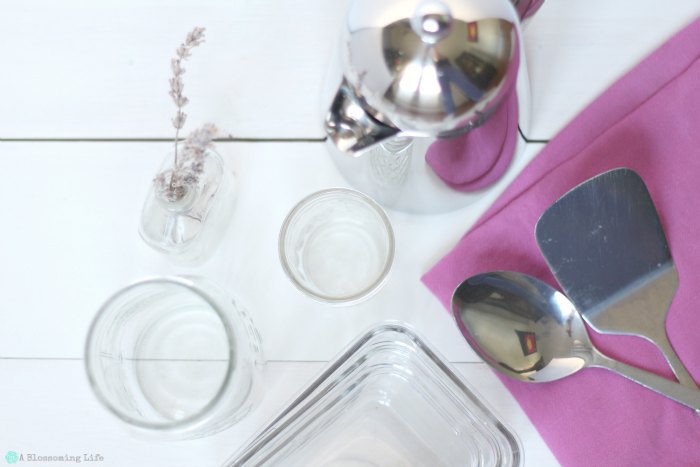How to Reduce Toxins in the Kitchen
This post may contain affiliate links. Read disclosure policy.
Every year I try to set a few healthy goals for the year. Not like the normal I’m going to lose these last 5 lbs, which hey would be nice, but rather goals that will improve my entire family’s health. This year we will be focusing on eliminating toxins from our house. Obviously, it is impossible to eliminate all toxins, but reducing toxins in your life will improve your health.
My hubby and I regularly go through our house and dispose, donate, or giveaway things that we are not using. Last weekend we went through the kitchen and put all of our cookie sheets and muffin tins in the yard sale pile. We have been slowly replacing many of our kitchenware to healthier non-toxic versions in the last year or so. One easy way of doing this without breaking the bank is by asking for them for Christmas and birthday presents.
Where are toxins found?
- Aluminum- most commonly found in bakeware and aluminum foil. Aluminum has been shown to potentially cause neurological diseases, like Alzheimer. (source 1, 2) One study showed that cooking meats with aluminum foil increased the meats aluminum content (source)
- Plastics- contain harmful chemicals that have been shown to be carcinogenic and hormone disrupting. Increasing our risk of cancer, infertility, obesity, and much much more. The Katie over at Wellness Mama has a great post about this.
- Non-stick cookware including aluminum baking sheets that are coasted with non-stick surface- are coated with PFCs (per fluorinated compounds) are a likely human carcinogen that can cause cancer, kidney, liver, and thyroid disease. (source)
- Drinking water- Tap water contains 300 contaminates according to the EWG including pesticides, chemicals, and heavy metals.
- Food- our food supply, especially with the standard american diet, contains pestisides.
What are Healthier Choices?
Stainless steel, glass, ceramic cookware, cast iron, filtered water.
Baking: instead of aluminum baking sheets we are switching to stainless steel (like these). We also use glass pyrex (like these)
to bake and store our food.
- The debate is still out on silicone. There are minimal studies done on silicone. Some studies suggest that it may not safe to cook/bake with at higher temperatures, but is safe heated at low temperatures and at cool temperatures. (source)
- For non-stick option use unbleached parchment paper.
Cooking: We all know that non-stick pans cause cancer right? That has been a huge topic for a long time now. Yet many of us continue to use them.
Save This Recipe
- The better option would be stainless steel (like this one)
and cast iron cookware (like this one)
.
Cooking Utensils: Stainless steel (like these) and wood (like these)
Storage: Stainless steel and glass (like these). Although the pyrex comes with plastic lids, I do not fill them all the way so the plastic doesn’t touch the food.
Water: Drinking water can unfortunately be contaminated with toxins. Our favorite way to filter water is with our Berkey Water Filter. That thing is amazing. I can literally taste the difference from our water from the tap compared to the same water through the Berkey. You can read all about the Berkey water filter here.
Food: Choose organic as much as possible. Some people argue that organic food still contains some pesticides, but the pesticide exposure is much lower in organic food then conventional. Pesticides used for organic food is naturally occurring. If you can’t afford organic, (which many times I find organic food is the same price or cheaper then conventional) choose the clean 15 to buy conventional and the dirty dozen to buy organic.
These are just a few ways to reduce the amount of toxins in your kitchen. Come back as we go through different rooms and ways to detoxify your home.
This post contain affiliate links. Affiliate links help support the blog without any extra cost to you.



